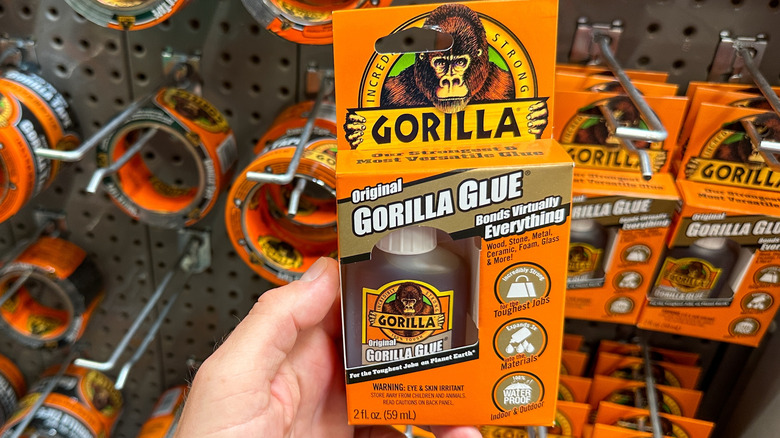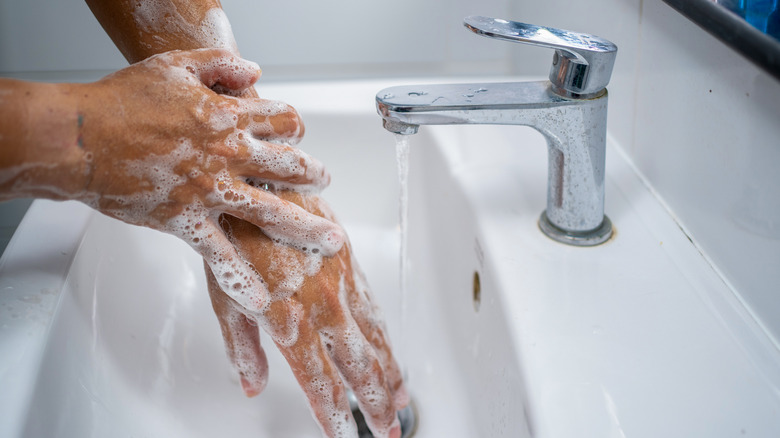The Crucial Detail You Should Know Before Working With Gorilla Glue
Thanks to its versatility, Original Gorilla Glue is one of those products that always ends up in your home. Whether you're working with wood, glass, stone, or other materials, Original Gorilla Glue can get the job done. But while it's an incredibly durable and useful adhesive, it can also trigger reactions in some people.
Original Gorilla Glue is often a favorite in homes because it's non-toxic unless ingested and has few fumes. It's one of the safer heavy-duty adhesives if you have children and pets around and, as long as you apply Gorilla Glue correctly and avoid mistakes everyone makes when using Gorilla Glue, it is easy to use. However, that doesn't mean you should abandon all caution with this product. Gorilla Glue acknowledges that its original product may act as a skin sensitizer as it can "cause sensitization by inhalation and skin contact."
Skin sensitizer refers to substances that can potentially cause an allergic reaction after making contact with your skin. You may also know it as allergic contact dermatitis. Generally, it shows up as a red, bumpy rash that is often itchy, too. If you already have a history of allergic contact dermatitis or otherwise sensitive skin, you should take extra precautions when using Original Gorilla Glue by wearing protective gloves and covering the rest of your skin. The company also advises that those with chronic asthmatic conditions consult a doctor before using the product.
How to properly work with Gorilla Glue
Even if you don't have a history of allergic reactions, it's wise to wear basic protective gear like gloves and safety goggles. For stronger products like Gorilla Glue's Super Glue Tape, it's also recommended that you work in a ventilated area to ensure that the fumes don't build up. With Original Gorilla Glue, this is less of a concern.
While Original Gorilla Glue is a tough adhesive, you don't have to stress if it does get on you. To remove dried Gorilla Glue from your skin, all you need is some soap and water. Be sure not to scrub too rough as that may irritate your skin. After, watch the area for any reactions. Allergic contact dermatitis can appear immediately after contact or take up to 48 hours to appear.
If a reaction does occur, you can try home remedies like applying an anti-itch cream, like Cortizone 10, or lotion. For further relief, you can try cooling your products in the fridge first. You can also place a cool, wet cloth on the affected area for 15 to 30 minutes a few times a day. But if you don't see any relief or the reaction worsens, then it's best to seek advice from a medical professional.

